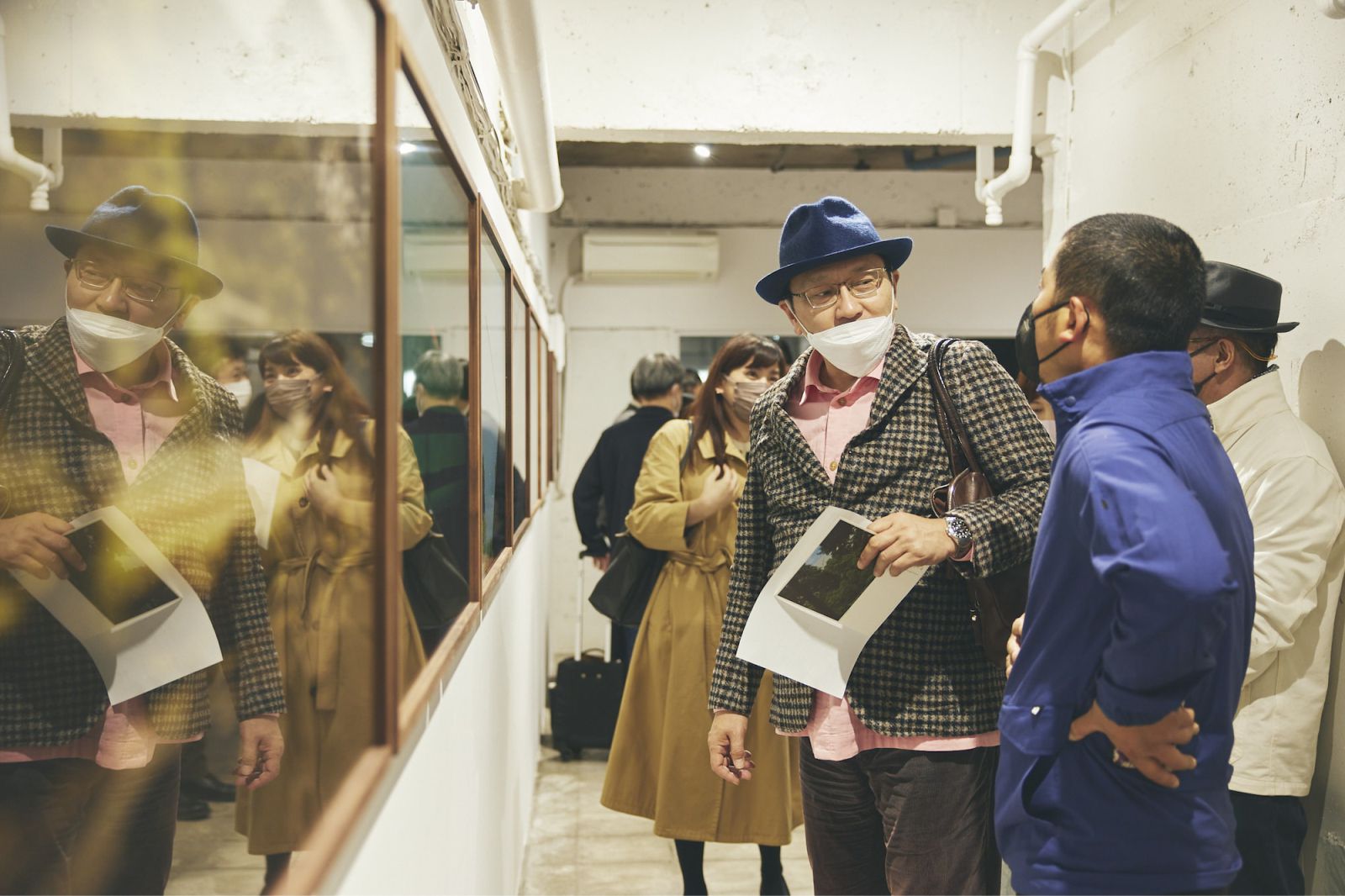Architect Makoto Yamaguchi began thinking about shakkei, or “borrowed scenery,” of Japanese gardens, and set out on a journey with the photographer, Kentaro Kumon. While visiting famous gardens all over the country, they contemplated aspects of Japanese culture and looked for what makes borrowed scenery fascinating. As they captured this on camera, the resulting photographs also brought about a new discovery. They had found “neighboring textures,” with different materials existing side by side.
“If you look closely, you may find that China and Korea look very bright-colored and vibrant, while Japan may seem a bit plain. Nevertheless, if you are still interested in Japan, it may be due to manga, Akihabara, or kawaii culture. Or you might be drawn to traditional cultures, such as kimono and sushi, which may seem unrelated to such contemporary cultures. There is a great divide between the modern and the traditional, and yet the mixing of these aspects can be seen everywhere. Experiencing this chaos is a major attraction of a visit to Japan.” says Makoto Yamaguchi.

Architect and Japanese garden researcher, Makoto Yamaguchi, points out that there is no real divide between modernity and tradition, rather the two are closely related. He claims that clues to deciphering this relationship can be found in the traditional culture of Japanese gardens. Kyoto is famous for its beautiful gardens, but it may be difficult to recognize upon visiting the principles that make them so beautiful. Or perhaps you find them to be nice, but cannot quite place where that beauty comes from.
Some Japanese gardens are considered “shakkei (borrowed scenery) gardens,” and one of the best examples is Entsu-ji Temple which was built in 1678. It features a “borrowed” view of Mt. Hiei, an extremely important element of Kyoto culture. However, as the mountain is at a distance and is very hazy, it might be difficult to understand and appreciate the value. (To confess, a lot of Japanese people are feeling the same way).

The principle behind the beauty in such gardens is what Makoto Yamaguchi refers to as “neighbouring materials,” which provides clues to understanding Japanese culture, connecting the modern and the traditional. The project aims to introduce the principle to a wider audience through the photographs by photographer Kentaro Kumon. To achieve this, the architect and photographer have been traveling together for almost two years.
First, the architect travels alone in search of Japanese gardens that incorporate “neighbouring materials” (Japanese garden culture has a very long history of approximately 1,500 years, thus the principle is difficult to find in some gardens). The architect and the photographer then travel back to the same place together, and the two continue to make discoveries through a cycle of photoshoots and discussions. The project is in progress, but the process thus far and photographs are available online. For viewing in person, an exhibition is currently being held until July 30th at MYD Gallery in Tokyo, run by the architect himself. Source and photos Courtesy of Makoto Yamaguchi.




